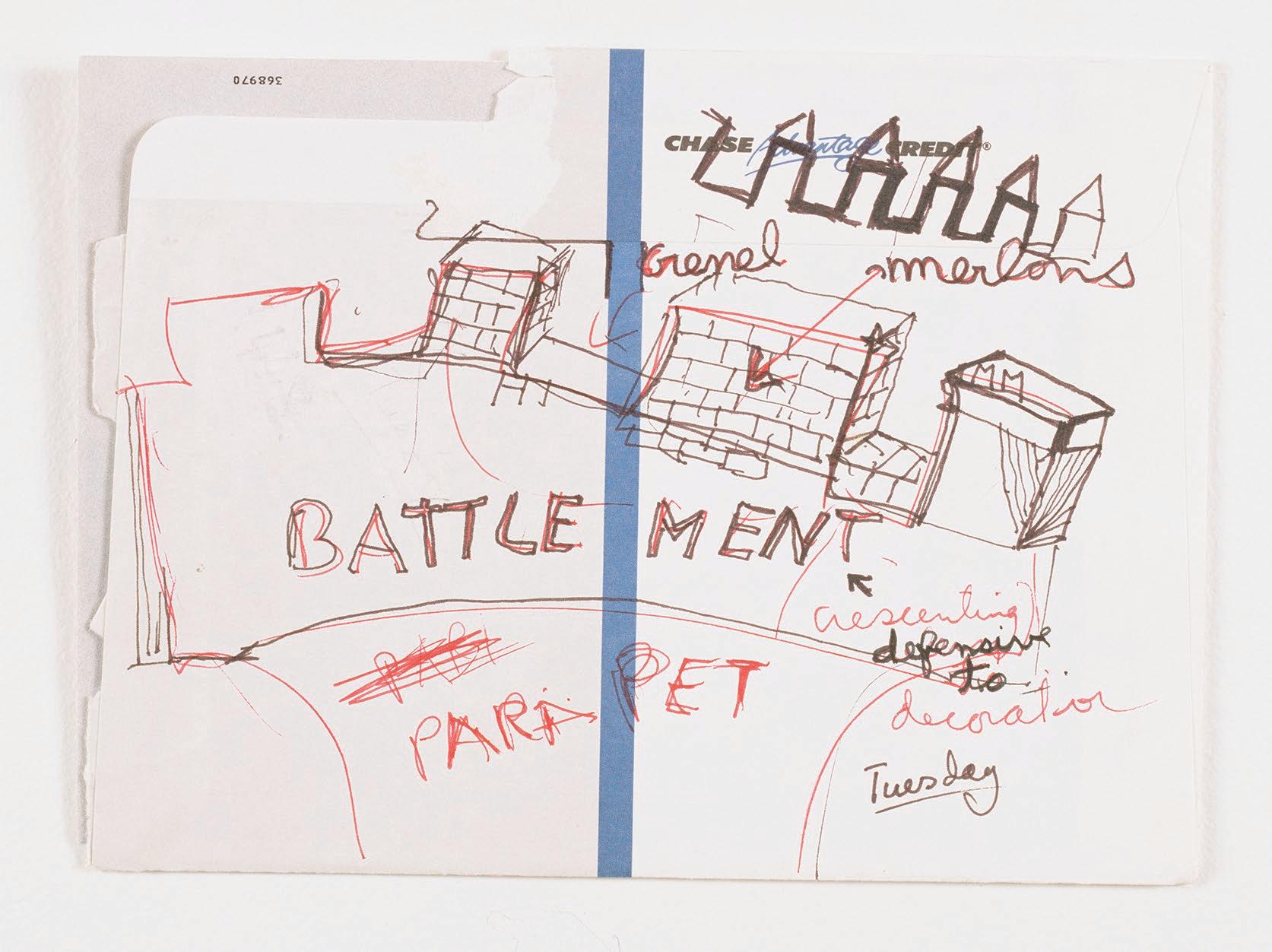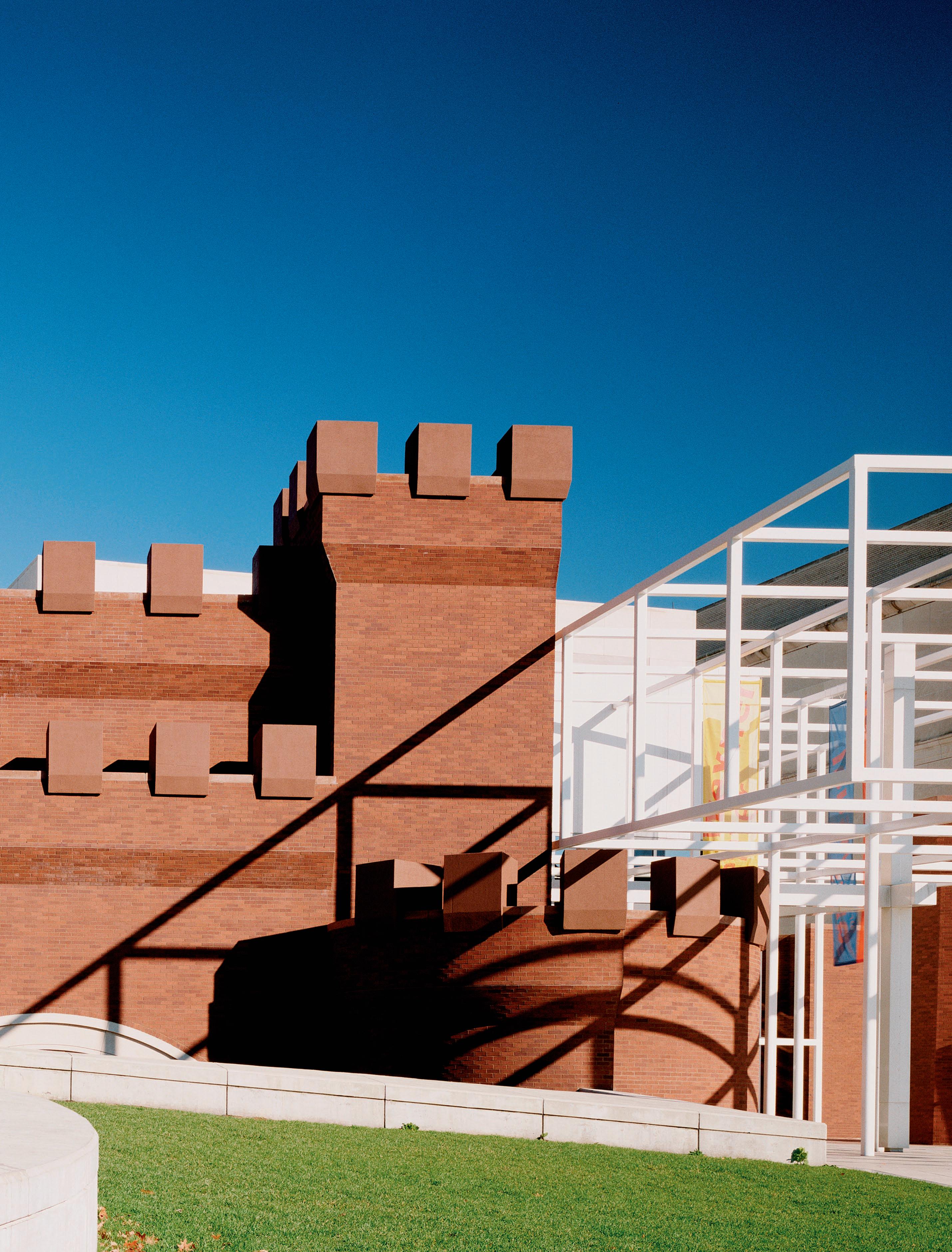
3 minute read
On Chris Burden’s Wexner Castle
After opening to empty galleries where Peter Eisenman’s deconstructivist architecture was on display, the Wexner Center for the Arts’ inaugural year of 1989–90 included a trio of exhibitions. The first two, Art in Europe and America: The 1950s and 1960s and Art in Europe and America: The 1970s and 1980s, acted as orientation devices (albeit through a problematic lens that looked only at western art history through the work of mostly white, cis-gendered male artists). Founding Wex Director Robert Stearns described that across this timeframe “artists have groped for the future by investigating new forms, materials, and purposes for art. As they did so, they tended to perturb more than they pleased and to raise more questions than they answered.”14
The final exhibition closing out that first year, New Works for New Spaces: Into the Nineties, invited 13 artists (including Gretchen Bender, Ann Hamilton, Tadashi Kawamata, Barbara Kruger, Christian Marclay, Trisha Brown, and Bill T. Jones) to create works responding to the architecture and mission of the Wex—a vanguard, multidisciplinary laboratory for art of the 21st century. Chris Burden, an artist who had gained recognition for his performative works in the 1970s, staged an intervention on the center’s façade, Wexner Castle. Where Eisenman’s design includes a smoothed-over brick tower that refers to the multiuse Armory that once stood on the same site (it was damaged by fire and subsequently torn down in 1959), Burden added the Armory’s battlements back onto the tower—those square merlons and open crenellations so typical of castle turrets. Nearly a decade after New Works for New Spaces, Burden affirmed an interviewer’s question that indeed Wexner Castle could be read as sculptural play with Eisenman’s architecture or as critical commentary on the historicization of architecture—the enduring construction of battlements after they ceased to serve a defensive purpose. Burden also acknowledged that Wexner Castle invoked conversations around institutional critique—a form of conceptual art that emerged in the 1960s in which artists began to call into question the museums and galleries that showed their work and to unmask how power and financial transactions operate in the art world and beyond.15
Advertisement
I see Wexner Castle in a lineage preceded by two of Burden’s works that contend with the structural integrity of the museum as a form of institutional critique. For Exposing the Foundation of the Museum (1986–88) at MOCA Los Angeles’s Temporary Contemporary, Burden had three trenches dug around the perimeter of the building. Able-bodied museumgoers were invited to descend stairs and examine the concrete foundation that supported the building. Burden’s Samson (1985) at the Henry Art Gallery was an intervention initiated from inside the building. The artist positioned a 100-ton jack that was attached to two timbers near the entrance to the gallery, pushing on steel plates positioned on opposite walls. The jack was connected to a turnstile, so each time a visitor entered the gallery, the jack would expand, causing it to exert more force on the walls of the institution, and threatening to destroy it. In this vein, by crowning Eisenman’s design, deemed by a critic as the “museum that theory built,” Burden’s seemingly impish intervention dealt just as critical a blow.16 10
LEFT
Chris Burden, Wexner Castle, 1990. Ink on paper, 5 1/2 x 8 in. © Chris Burden/Licensed by The Chris Burden Estate and Artists Rights Society (ARS), New York.
Image description: A sketch in pen of crenellations with the words "BATTLEMENT" and "PARAPET" written toward the center along with other notations.
NEXT PAGE
Chris Burden, Wexner Castle, 1990. Addition of crenels and merlons to existing Peter Eisenman–designed museum building. © Chris Burden/Licensed by The Chris Burden Estate and Artists Rights Society (ARS), New York.
Image description: Exterior view of a postmodern building with deconstructed red brick sections that include crenellations on the top recalling a castle. The building has white scaffolding to the right, and the foreground includes a partial view of a curved, fragmented amphitheater with sloping grass behind it.
11

12

13
SCORE FOR CONSENSUAL HEALING
Tell me the details of what you do remember. But give me the spread on all you don’t. Tolerate as much emotion as you can. Bleed the rest in me. Draft new texture in Bilateral stimulation as conscription conjured elsewhere. It’s a crime that I feel this fucking way sometimes. Fall in love. Never get back up. This is just the things we do.
14





